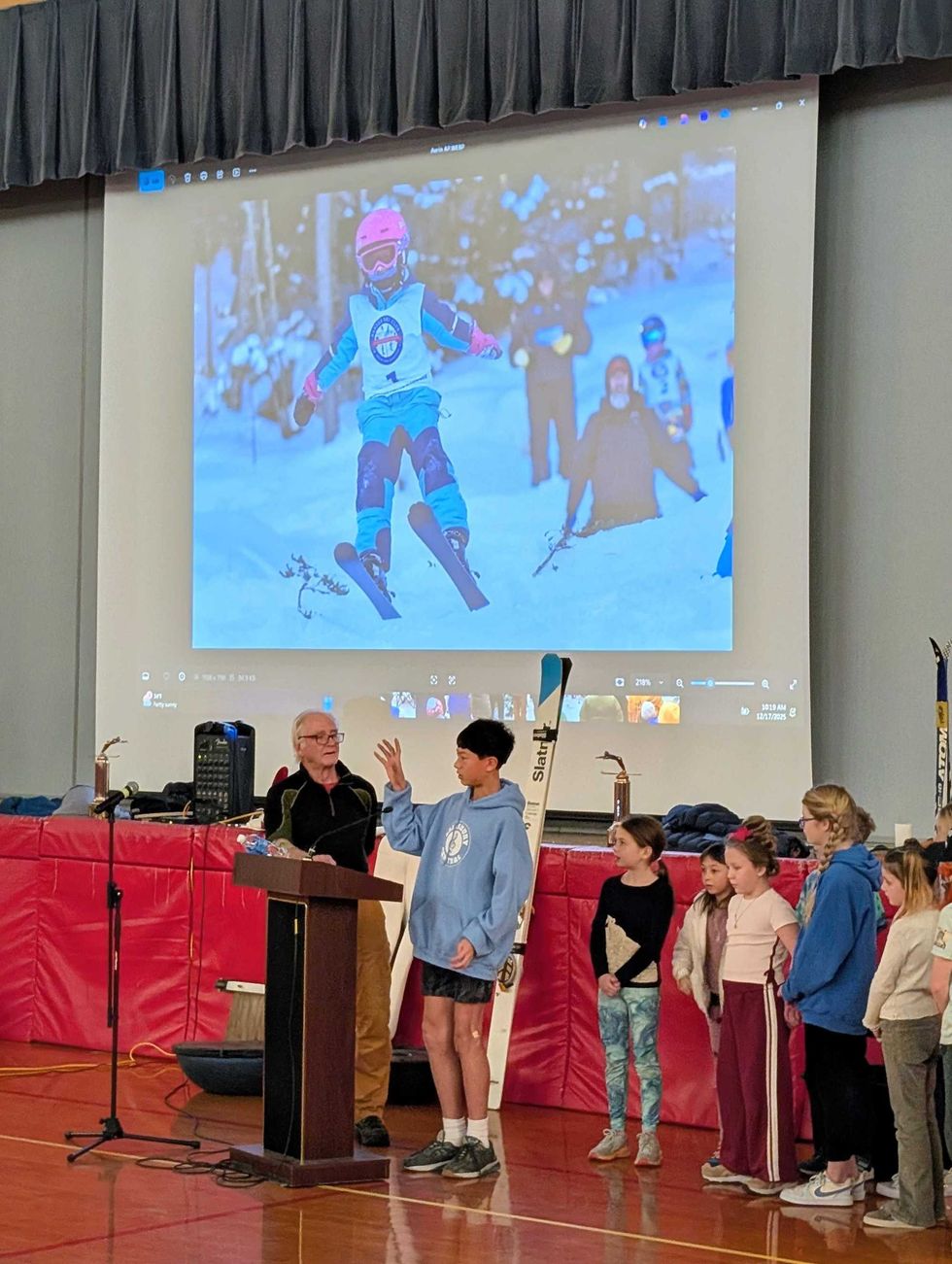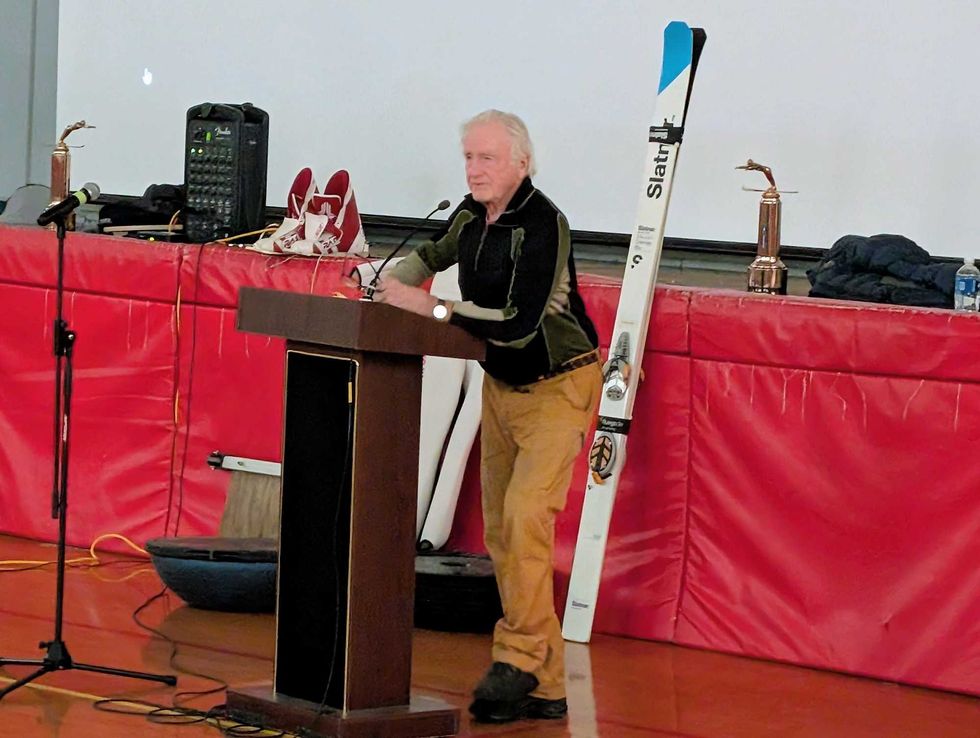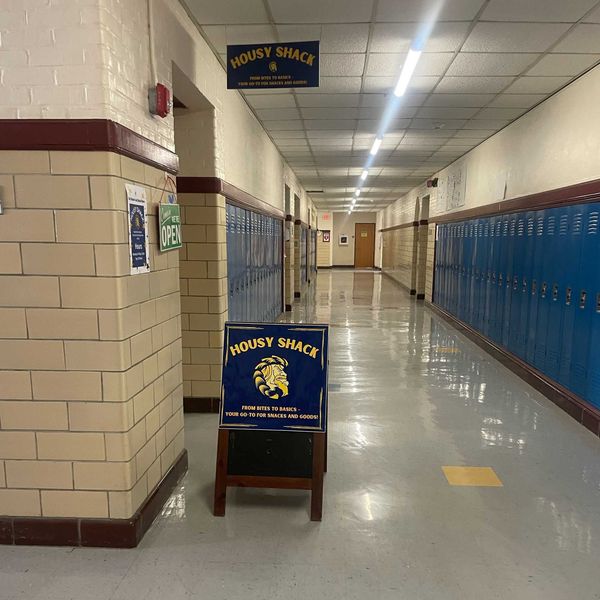Home is where the heart is

Jon Suters, Dinuk Wijeratne, and Nick Halley. Photo by Jennifer Almquist

Every seat in the Great Hall of the Norfolk Library was full. The audience ranged from toddlers held in their parents’ arms to gray-haired couples eagerly waiting to experience the music of the Dinuk Wijeratne Trio. Percussionist Nick Halley, bassist Jon Suters and Dinuk Wijeratne on piano, spent the next hour dazzling the grateful crowd with original compositions, superb musicianship and stories that wove a theme of “home” throughout the evening.
To award-winning composer, conductor and pianist Wijeratne — who was born in Sri Lanka, raised in Dubai, educated in the UK and at Juilliard, and now lives in Ottawa — home is many places: “Dubai was a melting pot of South Asian and Middle Eastern culture. Simultaneously I was being trained as a Western musician. I heard Mozart’s Piano Concerto No. 21 randomly when I was 12, and then I was hooked. It was my first spiritual experience.”
Wijeratne began the performance by saying: “Home is an ephemeral window in time, and perhaps the bittersweet quality of home is when we suspect that window in time has passed. I wrote this piece, “Homecoming,” in 2015 as a commission for piano and oud for the opening of the Museum of Immigration in Halifax, Nova Scotia. It was also the year I gained my Canadian citizenship.”
Recalling the origins of his composition “Damascene,” which was performed by the trio in the library Nov. 13, Wijeratne smiled: “I had traveled with the great Syrian clarinetist, Kinan Azme. We spent a few magical days in his home city of Damascus. It was a very precious time; it seemed like time had stopped. We have all had that feeling when you are perfectly at home in a new, strange place. Is home a state of mind? Is it the people we love? Or is it purely geography?”
A world-renowned musician, Wijeratne made his Carnegie Hall debut in 2004 playing with Yo-Yo Ma and the Silk Road Ensemble. He has been described by The New York Times as “exuberantly creative”; the Toronto Star called him “an artist who reflects a positive vision of our cultural future”; and the Manitoba Chamber Orchestra referred to him as “a modern polymath.”
Wijeratne has conducted the Calgary Philharmonic and the Qatar Philharmonic in Doha. His work “Two Pop Songs on Antique Poems” won both the 2016 Canadian Juno award for Classical Composition of the Year and the 2016 East Coast Music Award for Classical Composition of the Year.
For percussionist Halley, the performance was a return home. When Norfolk Library director Ann Havemeyer introduced the threesome, she noted that the first time she heard Halley perform in the library, he was 10, singing Beatles songs with Chorus Angelicus, a children’s choir started in 1991 by his Grammy-award winning father, Paul Halley.
Halley smiled and said: “It is meaningful to be back in Norfolk, and to feel the warm embrace of this special community. It is heartening to see so many familiar, gorgeous faces, everyone aging so gracefully. And the fact that they took the time to come and hear us, to support the amazing work that Eileen [Fitzgibbons] and Ann [Havemeyer]and the others at the library are doing makes this sort of homecoming that much more encouraging.”
Fitzgibbons is the events coordinator and children’s librarian for the Norfolk Library, all of whose music and arts programs are funded by The Norfolk Library Associates, which started in 1974.
Halley and his young family now live in Halifax, Nova Scotia: “By the time I got to Halifax, Nova Scotia, in 2008, Dinuk was already ‘Halifamous’ and well on his way nationwide. So I heard a lot about him long before he showed up to a gig of mine. Of course, I was terrified of him at first, but soon discovered what a gentle, magnificent soul he is. Playing-wise, it was love at first sight: of course, being so rhythmically compelling along with everything else, his music is any drummer’s dream, but I think he even liked me right off the bat, too.”
In 2010 the young Halley founded Capella Regalis, a Canadian charity dedicated to training singers, which includes a boys choir, a girls choir, and a professional men’s choir, offering a free music education and performance program for children and young adults in Nova Scotia. In 2012, Halley was awarded the Queen Elizabeth II Diamond Jubilee Medal in recognition of his contribution to Canada and Nova Scotia through the arts. For the 2013-14 season, Halley was the host of CBC’s national radio program, “Choral Concert.”
When asked about his dreams, Halley mused: “In one sense, I’m living my dream with Capella Regalis. I just want to keep building it. We’ve started an endowment, for instance. I would like to take them to England. Bring some coals to Newcastle and such. There is so much music I love within that genre; we will never get through it in my lifetime. I want future generations of kids to continue encountering that world of beauty.”
Suters is as tall as his standing bass. He lives in New Marlborough, Massachusetts, with wife Samantha Halley (Nick Halley’s sister) and their children: “Each of my five children has been encouraged to play music and all of them have some facility with at least a couple of different instruments as well as vocalizing. We have homeschooled them all and music is a big part of our approach.”
Suters plays piano, guitar, string bass, cello, didgeridoo, banjo, mandolin, lute, violin, trombone, saxophone, drum set and percussion, and steel drums.
Suters has taught at Berkshire Country Day School, Indian Mountain School, Salisbury School, and Simon’s Rock of Bard College: “Teaching has enabled me to constantly go back to the fundamentals of music making and demonstrate and talk about them with students. I teach bass guitar, drums/percussion, keyboards, fiddle, brass instruments, and this has helped me to understand the relationships between the different instruments in an ensemble.”
When asked about his musical influences, Suters replied: “I am also a classical guitarist and grew up listening to my virtuoso piano prodigy brother play all the greats, so basically everyone from Bach to Scott Joplin, plus the usual rock influences: Jimi Hendrix, Led Zeppelin, classic jazz greats like Miles and Coltrane and more modern ones like Pat Metheny and Herbie Hancock. Brazilian composers and musicians like Villa Lobos, Garoto, Paulo Bellinati, African artists such as Youssou N’dour, Ali Farka Toure, and Indian musicians such as L Shankar, Talvin Singh, and Shakti.”
Suters has appeared on stage with James Taylor, Taj Mahal, Doctor John, Rickie Lee Jones, Martin Sexton, Madeleine Peyroux, Eugene Friesen, Paul Halley, Ed Mann (Frank Zappa) and Charles Neville of the Neville Brothers.
One evocative composition, “Chloe” by Wijeratne, is based on Italo Calvino’s book “Invisible Cities.” The composer illuminated the ideas behind the music: “Chloe reads like some bustling street scene, full of shady characters. There are twins wearing coral jewelry, a blind man with a cheetah on a leash — all very odd scenes. They don’t speak. When I read that the city of Chloe ‘has a voluptuous vibration to it,’ I knew I had to write this piece. Calvino wrote, “‘f everyone acted on their impulses, the carousel that is Chloe would come to a stop.’”
In each piece, the music flowed into the room like ocean waves, rhythmic and soothing, Wijeratne played piano with crystalline precision and emotion, the bass of Suters poured through the notes like honey. Halley’s wild percussions, played mostly with his fingers on drum kit, frame drums bendhir and riq specifically — “and the odd bells and whistles, doctoring up the kit with old shirts and weird stuff like that,” laughed Halley — provided the structure beneath the music. Playing together, the three musicians created an instinctual harmony in a language unspoken.
Composer and philosopher Wijeratne explained the spiritual origin of each of his compositions. “Lebanese/American Poet Kahlil Gibran, in a poem called ‘Upon Houses’ from his book ‘The Prophet’ describes the home not as an anchor, but as the mast of a ship. At first the home is a place for consolation, safety and comfort. Thereafter, home becomes the beginning of a journey of curious exploration. I find that to be a beautiful sentiment, so I wrote this piece I call, ‘Whose Windows are Songs and Silences.’”
The trio’s final piece ended with an immediate standing ovation. Half-asleep children and their parents and grandparents were clapping; the players held hands and bowed deeply. Fitzgibbons, who organized the event, felt the concert “was an exciting evening full of complex chords and improvisations... wrapped around with old friends and new.”
The combination of global musical traditions, jazz improvisation, poetry and literary influences, musicians at the top of their game, and the warm “welcome home” from the Norfolk community created an evening no one will easily forget.
Students of Salisbury Central School watch ski jumpers soar during an assembly with Salisbury Winter Sports Association Wednesday, Dec. 17.
SALISBURY — Representatives of Salisbury Winter Sports Association gave a presentation at Salisbury Central School Wednesday, Dec. 17.
Former U.S. Olympic coach Larry Stone explained the fundamentals of the unique sport of ski jumping and its long history in Salisbury, where he learned to jump.
“When I was growing up here there were actually eight ski jumps just in this town in addition to the three down at Satre Hill,” he said. He noted that this winter will be the 100th year of Jumpfest at Satre Hill, named for the Satre brothers who moved from Norway in the 1920s. “They brought their sport with them and the first ski jump was actually when one of the Satres skied off of a barn roof in the center of Salisbury to show people how to do it.”
Mentioning the upcoming Winter Olympics in Cortina/Milan, Italy, Stone spoke of legendary Salisbury ski jumper Roy Sherwood who competed at Cortina in the 1956 Olympics.

Students at SCS saw videos of ski jumpers training and competing. Stone invited up students who had jumped at Satre Hill and 14 stepped forward.
One student was Aerin Sheil, who was asked what it feels like to jump: “It kind of feels like you’re flying. It’s a really good feeling.”
Gus Tripler, another student, said, “It’s like you’re suspended in the air and can see everything.”
He said his record distance of 18 meters was set in Vermont.
The student remarks gave way to closing comments that emphasized the school’s partnership with the Salisbury Winter Sports Association.
“Our partnership with SWSA is one of the most incredible things about Salisbury Central School,” Principal John Conklin said as he closed the assembly. He encouraged the students to attend Jumpfest Feb. 6 to 8.

The Community Closet at HVRHS is open for students to take clothes for any reason during the school day.
What started with one unexpected donation of clothes has grown into a quietly impactful resource for all students at HVRHS: the Community Closet. Now located in a spacious area above the cafeteria, the closet offers free clothing to any student for any reason.
The idea began a few years ago when a community member reached out to the former superintendent wondering if anyone at the school could benefit from used clothing that would otherwise go to waste. The superintendent then got in contact with Rachel Novak, the school social worker. “Once I had all those bags of clothes in my room, I was like, ‘I should put this in a space,’” Novak said. Her simple idea eventually became a full-sized closet accessible to all students.
From the beginning, Novak envisioned the closet as an inclusive space. “It’s open to anybody, it’s not just based on economic needs,” she said. Sustainability also plays a role. “Thinking about the environment, some students like to thrift and just get clothes that way,” Novak said.
After the initial donation, contributions continued to grow. “I reached out to our staff members and faculty,” Novak said. The most consistent donations come from the faculty at HVRHS and a few community members who learned about the closet. Finding teenage-appropriate clothes has been a challenge. “I get a lot of donations that are nice, but I don’t think teenagers would want to wear them,” Novak said.
Another ongoing obstacle has been awareness. Many students don’t know the closet exists at all. “That’s been the hard part,” Novak said. “Getting it out to the wider community of the school.” Novak is looking for students and staff to spread the word. “It helps because our school nurse knows and other faculty members,” she said. “When they know a student needs something, they just bring them up.”
Looking ahead, she hopes to promote the space more actively. “When we come back from this break, I do plan to … get fliers and all that up and going,” Novak said. There may even be an upcoming expansion — she has discussed the possibility of turning part of the area into a food pantry. “That would be more of a need-based system for students,” she said. “But right now, promoting it is where I’m at.”
The Community Closet is well-stocked currently. “Just because of the amount of clothes I have, I’m not accepting any more donations until I clear some stuff out,” Novak said. She is still willing to make room for more fashionable, teen-friendly items donated by students. “That way I’ll have more teenager approved clothes.”
Above all, she wants students to know that no one is limited to using the space. “Sometimes there’s a stigma around it … like, ‘I don’t need help. I don’t want to take away from anybody else that may need it,’” Novak said. Due to the amount of clothes, students should feel welcome to use the closet for any reason. Some students even grab items last minute for sports and activities. “It’s important for kids to know it’s for everyone.”
Whether a student wants to thrift clothes sustainably, forgot to pack clothes for an after-school practice, or is in need of a new outfit, the Community Closet is a resource for all.
Sophomore Eliana Lang enjoys her Housy Shack cookie.
Now in its second year, the Housy Shack is a hit among students. The special education department-run store that sells warm cookies, drinks and other snacks to students and teachers draws people to a room in the back hallway every time it’s open.
The smell of warm cookies welcomes visitors to the store with snacks, drinks and even Housy merchandise for sale. The cookies are definitely the favorite, sometimes lines go out the door to get one before they sell out.
The cookies are so popular that the store had to increase prices from 50 cents to a dollar and implement a four cookie per person maximum. The Shack sells about 40-100 cookies per day and has about 20-60 HVRHS customers visiting per day.
Julie Browning and Heather Strid, two of the HVRHS faculty members that help run the Shack, said their goal was to create real-world job experiences as well as real-world shopping experiences for students at HVRHS. “Learning the skills to work in the world can be taught in a classroom, but the lessons are more meaningful and valuable when they are applied in real work situations, which is what we create through the school store,” Browning said.
The original purpose for the store seems to be working, as several students are learning important skills. Students said the store taught them skills like counting money, checking inventory and cleanliness along with social skills and customer service that could help in the professional world after high school.

As the store quickly became a hit, organizers were faced with the challenge of finding funding. “When we started planning to start the school store two years ago we needed money to buy equipment, supplies and food to start it up but were not sure how to get it,” Browning said. “Mrs. Strid came up with the idea of applying for a grant from the 21st Century Fund to help us get started and they were so generous.” That grant has been crucial to the success and growth of the school store.
Not only does the Housy Shack benefit the special education department, students said it fosters a sense of community throughout the school. “School store cookies are my favorite thing ever. They brighten up my day,” said Eliana Lang, a sophomore at HVRHS. Dayana, one of the student staffers at the Housy Shack, said her favorite part of working in the school store is when students come in to make purchases. She enjoys talking to them and ringing up their orders on the cash register. The Housy Shack brings people together and offers the opportunity for students to connect with each other.
As the school year continues, the members of the school store look forward to expanding their inventory by creating and selling a variety of Housy merchandise — t-shirts, sweatshirts, water bottles, and more. “I have had several students put in requests for certain hats, key chains, etc. … so there will be more of that to come,” Browning said. Last school year, profits were all invested back into the school store. “This year we are hoping to make more of a profit and will look to use the money that we make for field trips, outings as well as opportunities to donate and give back to the community,” Browning said. They also would like to use the school store to fundraise for other causes. “Right now we are collecting donations for The Little Guild Animal Shelter, so if anyone has pet supplies they would like to donate please drop them off in exchange for a cookie,” Browning said.